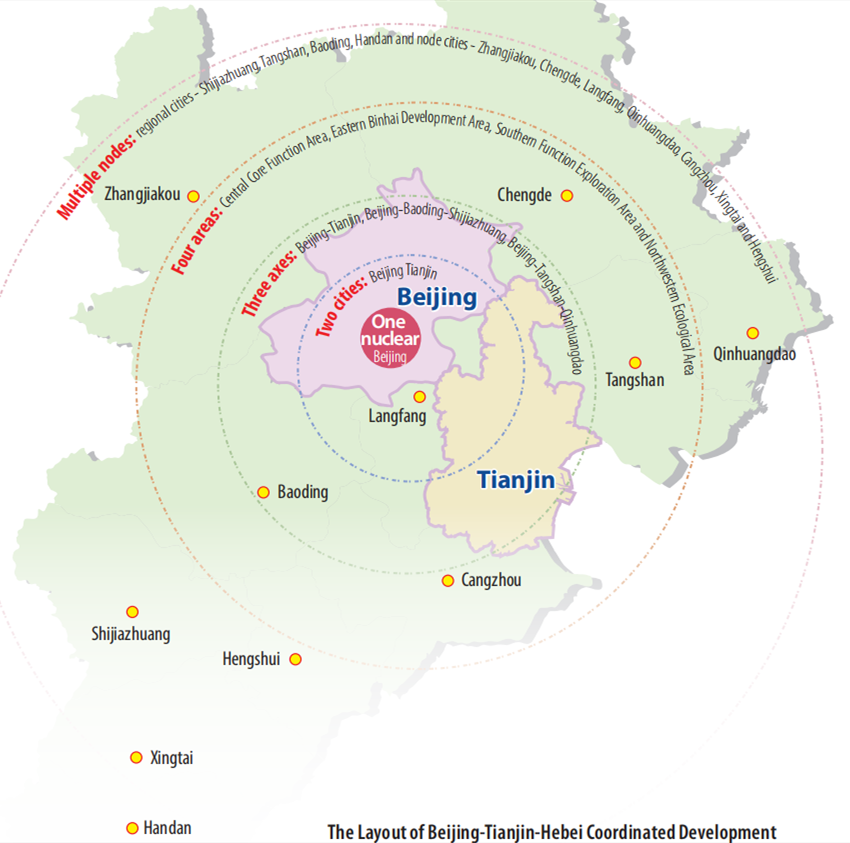Coordinated Development of Beijing-Tianjin-Hebei Region
Beijing-Tianjin-Hebei integration is a national strategy mapped out by Chinese government, which aims to promote regional coordinated development and build a new pole of economic growth so as to enable the three regions to draw on each other's strengths, promote the development of the Bohai-Rim Economic Zone, and drive the development of the hinterland in North China.
According to the "Outline of Beijing-Tianjin-Hebei Collaborative Development", Tianjin's role is positioned as the national research and development base for advanced manufacturing; the northern core area for international shipping; demonstration area for financial innovation and operation; pilot area for reform and opening-up.

Coordination in Transportation
In the process of Beijing-Tianjin-Hebei integration, Tianjin promotes the network layout and intelligent management and integrated service to strengthen interconnection of different modes of transportation and builds a safe, convenient, economical and green transportation system.
Five high-speed railways have opened to traffic: Tianjin-Qinhuangdao, Tianjin-Baoding, Beijing-Shanghai, Beijing-Tianjin railway and its extension. The one-hour commuting circle has basically taken shape in Beijing-Tianjin-Baoding core area.
BeijingTianjin-Hebei Inter-city Railway Investment Co. was also founded to ensure the integration of rail transport in the region. The construction of Beijing-Binhai and Tianjin-Tangshan railways has started. The monthly pass system for Beijing-Tianjin intercity trains has been launched; the Beijing-Jizhou intercity trains are already in operation.
In highway transport, the skeleton of highway network has been completed,
consisting of six horizontal lines and four vertical ones. Tianjin sections involved in the plan have gone smoothly as planned.
Ports not only constitute as a geographical advantage of Tianjin, but they also serve as bridgeheads for opening up in the process of Beijing-Tianjin-Hebei integration. There are 25 inland dry ports connected with Tianjin Port, including 10 in Beijing and Hebei. The first sea-rail integrated container railway hub in the region has been built. Tianjin Port and Tangshan Port resources, extended free trade, and port all function to promote the interoperability of electronic ports.
In aviation, as an important integrated transport hub, Tianjin Airport has become a major highlight of the coordinated development of transportation in the Beijing-Tianjin-Hebei region. Tianjin takes the initiative to provide a second airway for passengers coming in and out of Beijing. It has 20 off-site air terminals and has launched off-site cargo terminals.
It has launched the "air-rail transport services 4.0", which covers Tianjin and eight cities of Beijing, Hebei, Liaoning and Shandong. The city has also improved the ground transport network and provides ground transport services to Beijing and Tangshan in Hebei.

Copyright ©
Tianjin Municipal Government. All rights reserved. Presented by China Daily.
京ICP备13028878号-35

